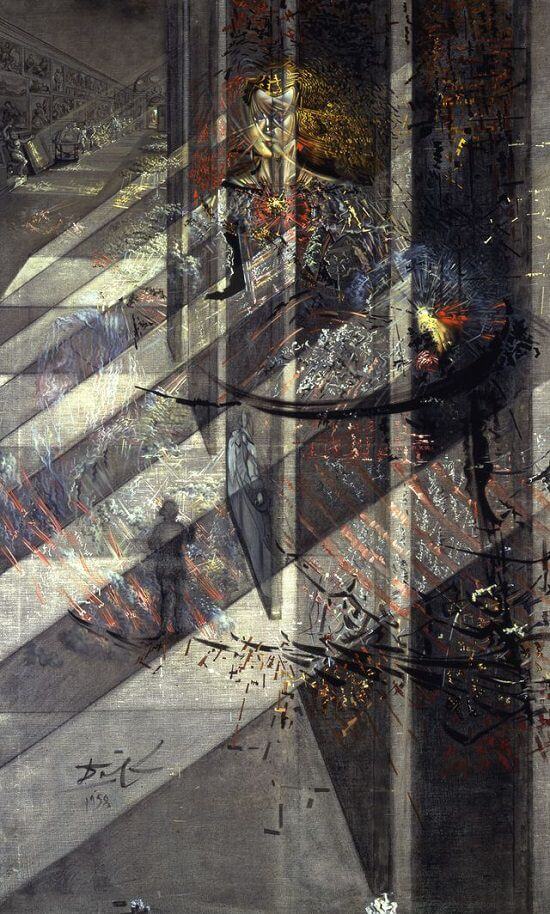Velazquez Painting the Infanta Margarita with the Lights and Shadows of his own Glory, 1958 by Salvador Dali

Dali's admiration for Diego Velazquez had begun when he was a youth. At the age of 15 he had set up a short-lived magazine called Studium, for which he wrote an essay on Velazquez as one of a series of articles entitled 'The Great Masters of Painting'. Even during his Surrealist period he held up the realism of Old Master like Velazquez, Titian, Rembrandt and Vermeer as the means by which he could 'materialize the images of concrete irrationality'.
As the 300th anniversary of Velazquez's death approached, Dali decided to produce this painting based on Infanta Margarita Teresa in a Blue Dress by Diego Velazquez. However, with characteristic eclecticism he reproduced Velazquez's imagery in a contemporary style derived from American Abstract Expressionism. Dali, who himself had achieved such enormous success in America, identified in particular with Willem de Kooning, the Dutch-born Abstract Expressionist resident in New York, or as Dali chose to put it, 'the colossus straddling the Atlantic with one foot in New York and the other in Amsterdam'. While the exuberant brushstrokes of Dali's work undoubtedly show De Kooning's influence, they also make references to Dali's current scientific interests. The left hand of the Infanta, for example, was inspired by tracks of atomic particles on photographic film, while her head is composed, naturally, of rhinoceros horns. Despite these allusions to modern scientific and artistic discoveries, the top left-hand corner of the painting contains a detailed depiction of a room in the Prado, as if to emphasize Dali's debt to the Old Masters and, in particular, to his Spanish predecessors.























